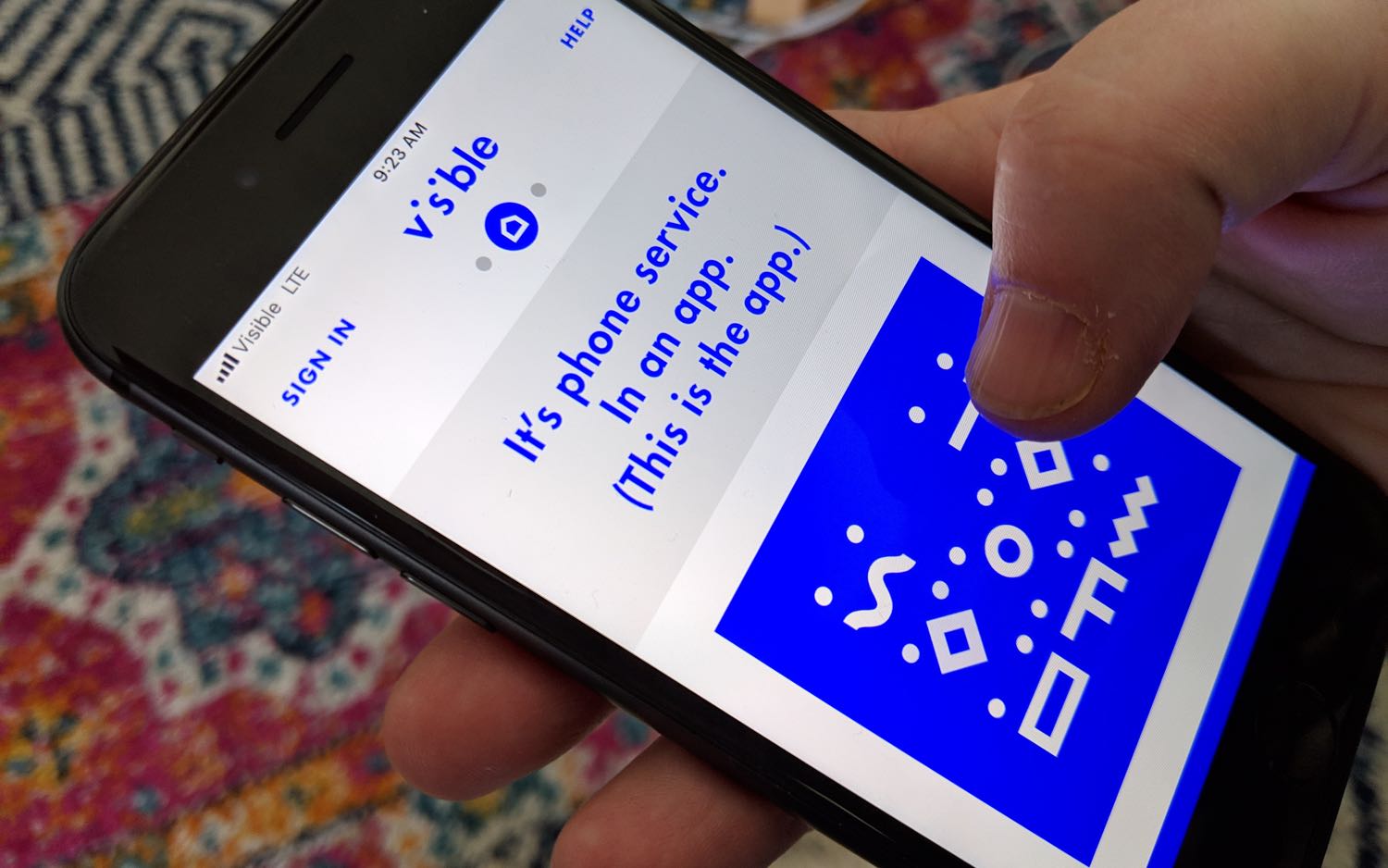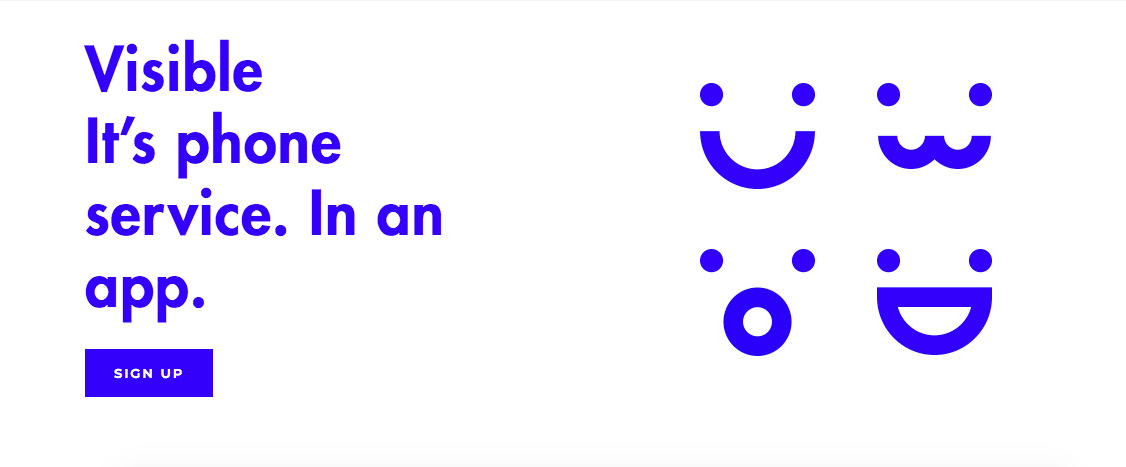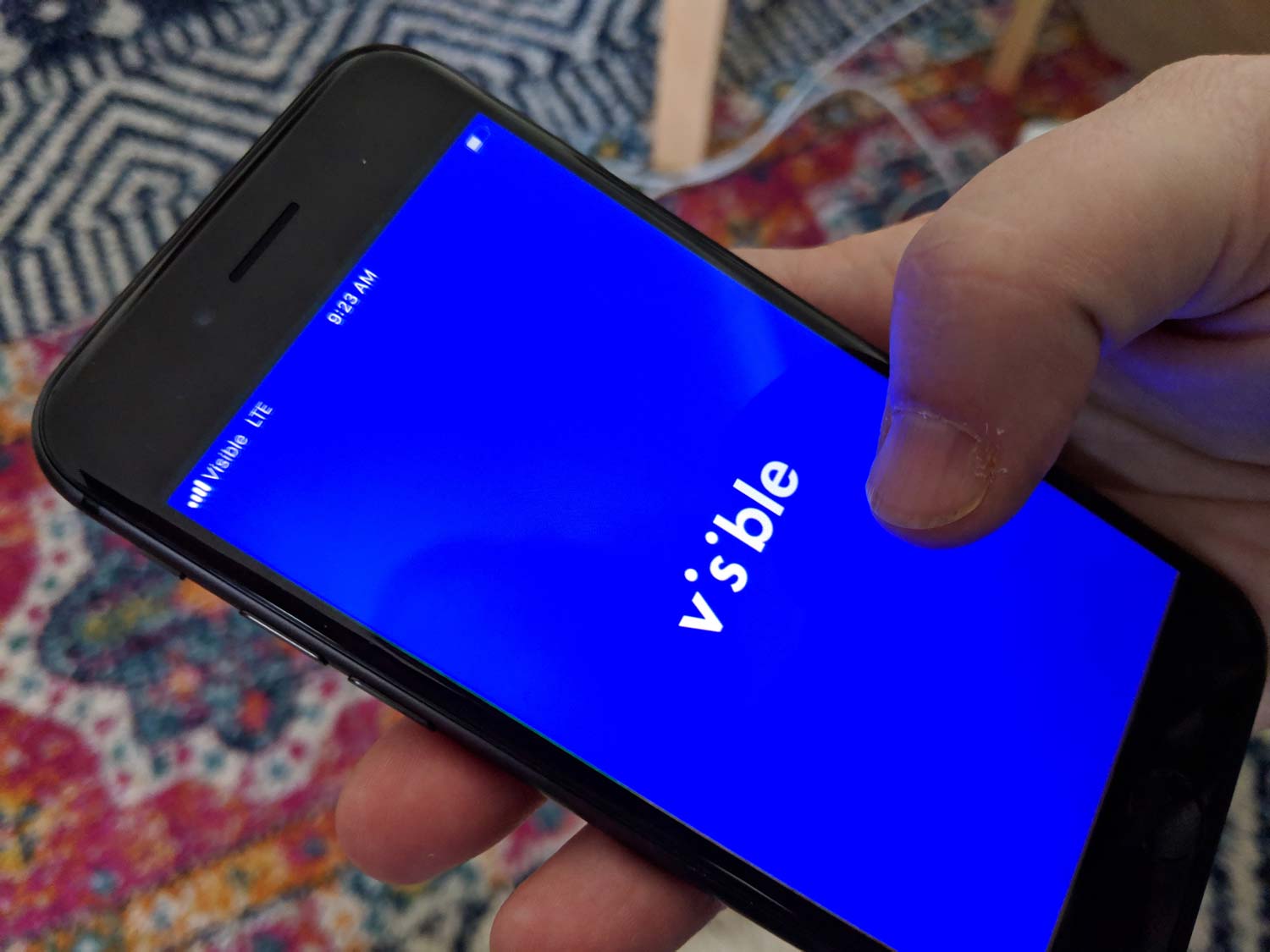What Is Verizon's Visible (and Is It Worth It?)
Verizon, the United States' largest cellular carrier, has a new service called Visible, with unlimited calling, texts and data for $40 a month. Is it the right service for you?

Editors' Note: Updated Jan. 25 to reflect Visible's added support for Android phones.
Verizon, the United States' largest cellular carrier, quietly rolled out a new wireless service called Visible last year that offered unlimited calling, texts and data for $40 a month. And Visible is starting off 2019 with a pair of moves that could expand its low-cost service to more customers.
Debuting in 2018 as an invite-only service, Visible soon expanded its service so that anyone with an iPhone 6 or later could sign up. Now you no longer need to bring your own device — Visible has started selling phones, including the Galaxy S9 and S9+. That means Android users are able to sign up for Visible and its $40 unlimited plan, too, so long as they don't mind using either of those specific devices.
Here's a quick rundown of Visible's service, and how it works.
What network does Visible use?
Since Visible is owned by Verizon, it's no surprise that you'll be using Verizon's many wireless towers should you turn to Visible for your cell phone coverage. And that's good news — Verizon's network is quite extensive, so anywhere that Big Red offers coverage, you'll be able to connect with Visible.
Verizon's LTE network is also quite fast. It finished with the best speeds in our most recent round of LTE speed tests. However, that's a benefit Visbile subscribers won't see, as we'll discuss in a moment.
Sign up to get the BEST of Tom's Guide direct to your inbox.
Get instant access to breaking news, the hottest reviews, great deals and helpful tips.
What plans does Visible offer?
There's just one plan at Visible, and it's an attractively priced one: for $40 a month, you get unlimited talk, text and LTE data. Taxes and fees are included in that price, too.
Visible accepts payment over Venmo, PayPal and credit cards, so it's clearly going for flexibility. And since you pay per month, there's no annual contracts.

If $40 for unlimited talk, text and data sounds too good to be true, you should realize you'll have to live with some restrictions when using Visible. Download speeds are just 5 Mbps, and the videos are only 480p, which isn't standard HD. So sure, you get unlimited data, it's just not very fast data, nor will you enjoy the best image quality. Music also streams at 500 Kbps.
Additionally, Visible's FAQ says that "when the network gets congested your data could slow up for a bit."
Do those restrictions matter? When we tested Visible's service, we found out the carrier definitely isn't kidding about that 5 Mbps cap. While download speeds topped 5 Mbps every now and again, speeds stayed under that cap for the most part, even in areas where Verizon-tied phones were downloading data at a faster clip. And in areas where Verizon's speeds weren't as good, we really noticed an impact on Visible.
The thing is, if you primarily use your phone to check Twitter, read email and do light web-browsing, you may be able to get away with that cap on speeds. Folks who do a lot of streaming or uploading and downloading of files from their phone may be more impacted. And that 480p video streaming restriction had very little impact, especially on a smartphone-sized screen.
What phones can you use with Visible?
If you asked that question back in 2018, the answer would have simply been "the iPhone." But that changed this January, when Visible extended support to the Galaxy S9 and S9+. Those are the only Android phones that work with the service now, but Visible says that more will be added.
Visible now sells smartphones, too, after requiring initial customers to bring their own device. In addition to the S9 and S9+, the carrier sells 11 different iPhone models — the three iPhones Apple introduced in 2018, the original iPhone X, the iPhone 8 and 8 Plus, the iPhone 7 and 7 Plus, the iPhone 6s and 6s Plus and the iPhone SE. Prices are in line with what you'd pay for the phones if you bought them directly from Samsung or Apple.

In an unusual move for a discount carrier, Visible lets you buy the phone in monthly installments. (Most low-cost carriers require you to pay the full price of a phone upfront, which is why they largely concentrate on budget models.) Installment plans are at zero-percent interest and require no down payment.
What special features does Visible offer?
When you're charging someone only $40 for unlimited data, you don't really have to offer a lot of perks to sweeten the deal. And indeed, Visible keeps its special offers to a minimum.
There are a few noteworthy features, though, starting with the carrier's approach to customer support. The Visible app, which you have to keep on your phone in order to manage your account, includes a live chat feature between 8 a.m. ET an 11 p.m. ET on weekdays and 11 a.m. ET and 9 p.m. ET on Saturday and Sunday. Responses were fairly prompt when we tested the service, though that could change should more customers join Visible.
If you buy a phone from Visible, you can opt for device protection through the carrier. The Visible Protect service covers accidental damage, loss, theft and out-of-warranty mechanical breakdowns.
How does Visible compare to other carriers?
Visible's plan sounds similar to what you get on some low-cost carriers. Boost, for example, offers unlimited data, talk and text with 480p video, music at up to 500kbps and streaming cloud gaming at up to 2mbps at $50 per month, with the same caveat about being slowed down when the network is congested. MetroPCS has a $60 plan with unlimited data and 10GB of hotspot data, and while it has 480p video, it offers LTE speeds. Only one other carrier — TextNow — matches Visible's $40 price for unlimited LTE data.
Outlook
Unlimited data for $40 is tough to pass up, though Visible's speed and streaming restrictions are worth noting. Customers with big data needs who also want to keep monthly costs under control should take a look at Verizon's upstart subsidiary, especially if they don't need the fastest possible network speeds.
Andrew E. Freedman is an editor at Tom's Hardware focusing on laptops, desktops and gaming as well as keeping up with the latest news. He holds a M.S. in Journalism (Digital Media) from Columbia University. A lover of all things gaming and tech, his previous work has shown up in Kotaku, PCMag, Complex, Tom's Guide and Laptop Mag among others.
-
aaronchriscohen Hotspot not supported by Visible. I'll be sticking with my 10GB LTE plan from MintSIM for which I pay $27 per month.Reply -
thetaplace Dang. That is depressing. I don't use hotspot a lot but it is nice to have in a pinch.Reply -
jb-zr1 Reply20960976 said:Hotspot not supported by Visible. I'll be sticking with my 10GB LTE plan from MintSIM for which I pay $27 per month.
Are you still pretty happy with MintSIM? Do you also use it for calling?
Thanks,
JB -
jerusalemcherry Visible offers unlimited hotspot for a few months now, no extra cost. Works good so far.Reply

